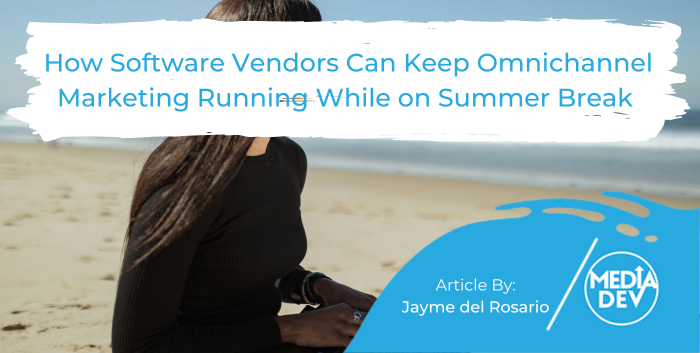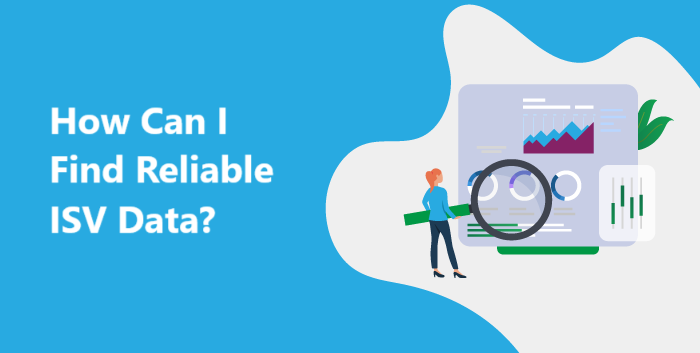For any successful marketing campaign to work, it’s important to have great landing pages that can be used as support to educate, nurture, and convert top-of-the-funnel leads into viable sales opportunities.
Of course, understanding your key target audience is step one to creating the messaging you will use when publishing a landing page, but knowing your buyer personas inside and out is not the only thing to keep in mind if you want to increase your conversion rates. By keeping these 10 Best Practices at the forefront of your mind when creating new landing pages and deploying your FY2022 marketing strategy, you should see significant improvement to the performance of your landing pages.
1. Create one landing page for every audience
It goes without saying that your message must resonate with your target audience and the best way to do that is by creating a specific page for each and every type of buyer persona you target. Whether you segment by industry vertical or job title, it’s important to tailor your message to the exact potential buyer you are seeking to engage. By creating several different landing pages you increase your chances of engagement with each individual audience.
2. Focus on benefits, not features
One mistake software vendors often make is to describe feature sets at length, believing that their audience will inherently understand the benefits of a product by knowing what it does and how it does it. Nothing could be further from the truth, especially if your target is comprised of business decision-makers and not technical ones. By focusing on the business benefits your product can bring to the table, your prospects will imagine their lives being made easier for them after deployment. By highlighting success stories, or letting customer quotes speak for themselves, you will increase your legitimacy and peek the interest of your audience.
3. Keep prospects focused with a single conversion goal
Landing pages that have several different call-to-actions can be highly confusing for prospects. If you want to promote a free-trial offer, encourage prospects to download an asset, and be contacted for more information, your audience will get lost. Take one of those actions and make that the centerpiece of your landing page. You can then create follow-up landing pages tied to email marketing campaigns as you push prospects down your sales funnel. It’s very important to meet your prospects where they are and use the appropriate content that will encourage them to take the one action you are hoping they will take to move them along their journey. If you are targeting cold prospects who know nothing about your offer, inviting them to attend a webinar may be too great of a leap to ask of them. Keep in mind that we are the ones who are in a hurry, but prospects have all the time in the world; you will only push them away if you are being too pushy too quickly.
4. Write compelling copy optimized for SEO
Listing out all the keywords you want to rank for and understanding the potential traffic that those keywords may yield on various search engines (so that prospects find you), will help you write compelling copy that is optimized for SEO. When choosing the keywords you want to rank for, be sure to get specific. If you choose very broad and general search terms, it will be too difficult to rank for them. Find your niche by focusing on something particular that people are looking for. Don’t over-do it with the keywords either. Having copy that sounds natural and not artificially contrived is important so that your audience learns something and is compelled to want to know more.
5. Use directional cues to capture attention
Directional cues are arrows that point towards the button you want your users to click on. While it may seem strange to include a big red arrow that is pointing to a CLICK HERE box, studies have shown that landing pages with this type of visual are able to attract the reader’s eye and perform better than those without them. Play with this a bit to see what makes sense and make sure that the cues are in a color that stands out (red for example) so as to create a sense of urgency.
6. Make sure your visuals add value
Sometimes landing pages have stock images that look completely random for the topic at hand. Designers may use images that fit the space, but that are not necessarily adding value to the text. Be sure that when you are reviewing your landing pages before they go live, you review the images too. If you don’t like an image, tell your designer what you had in mind. Designers can very often find images that match your idea, but can have a hard time choosing one themselves if they are not given that direction. Make sure that your images reveal your company values. If diversity is an important value, for example, use images that reflect that.
7. Make an irresistible offer
Don’t forget that the purpose of a landing page is to be a lead magnet, so you have to offer something valuable for your target audience if you are going to grab their attention and convert visitors into leads. By creating an irresistible offer (one that no one can refuse), you will collect more traffic you will own.
8. Optimize for page load speed
There is nothing worse than a landing page that takes forever to load. I have clicked on links where the page takes forever to load, and I end up losing patience and closing the window. Page load speed has a major effect on conversion rates. If it’s too long, visitors won’t wait around to evaluate your offer. They’ll click the back button and find another page to look at instead. Make sure to test this on various web browsers and be sure that your landing page is also optimized for mobile devices.
9. Ask only for what you need
No one likes filling out web forms. They are tedious and often raise suspicion about how the data will be used. The golden rule for web forms is “keep it simple” and only ask for what you need. If you are looking for emails, do you really need the person’s mailing address? Are job titles critical in all cases? Can first name and last name be asked in one field?
10. Follow up with a thank-you page
Once your prospects have successfully completed the desired call-to-action, make sure that they are directed to a thank-you page immediately. Not only is it important to signal the end of this “transaction,” for the visitor, it’s also just polite. You can explain what will happen next on this page as well, whether that be to email them a copy of a whitepaper or subscribe them to a newsletter that they will receive shortly.
Conclusion
Making several variations of your landing pages as a way to benchmark and test performance will help you tweak and refine over time. Be open to learning and making improvements as you move forward and get feedback from your audience.








